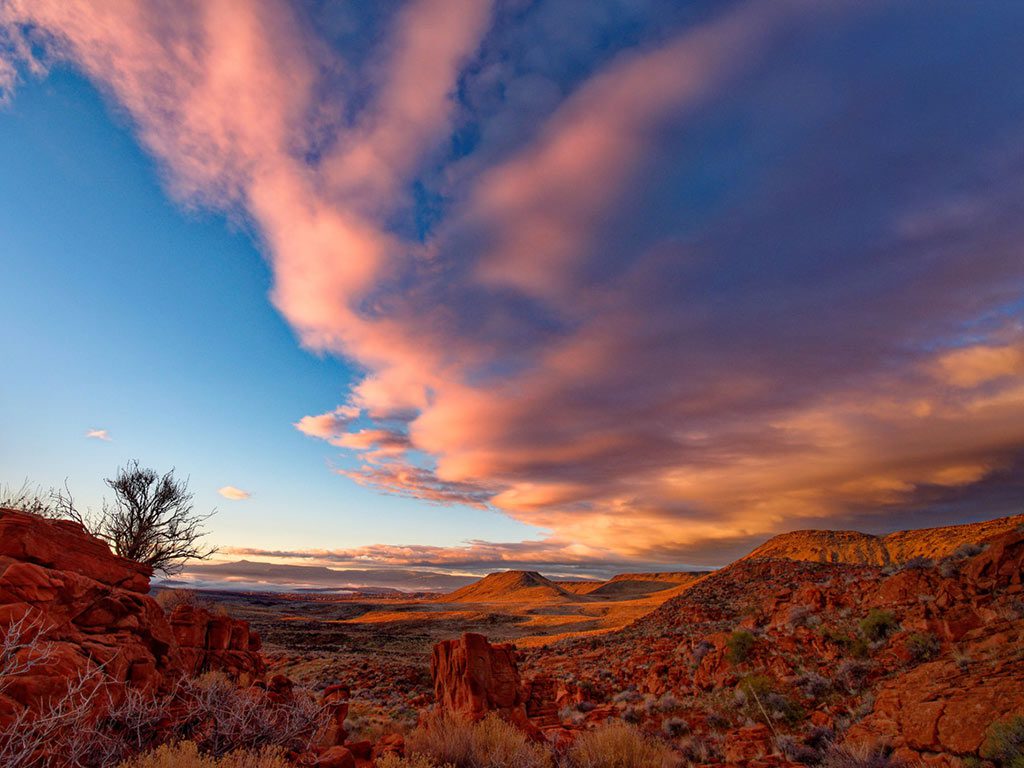A vast network of public lands in Utah are facing growing threats and there are two main reasons: out of control population growth and a lack of good decisions by local leaders to plan for growth and protection of wildlands and wildlife.
For decades, St. George, Utah, has been one of the fastest growing metropolitan areas in the United States. The St. George metro area had a population of about 195,000 people in 2022, up from 91,000 in 2000, and just 26,000 in 1980. That growth is expected to continue and a recent University of Utah study projected that almost 465,000 people will live in the region by 2060. The 138% projected population growth over that time period is the second highest of all 384 U.S. metro areas.
Unfortunately, local leaders have shown little interest in mitigating the ecological impacts of St. George’s expansion. Instead, they’re asking the rest of us to bear the costs to public lands and wildlife.
The Mojave Desert, Colorado Plateau, and Great Basin all converge at St. George. This transition zone is biologically rich, with a unique array of plants and animals that reflect the three ecoregions. It is home to the most northern populations of reptiles typically associated with the hotter Mojave Desert to the south – the threatened Mojave desert tortoise, Gila monster, chuckwalla, and sidewinder rattlesnake.
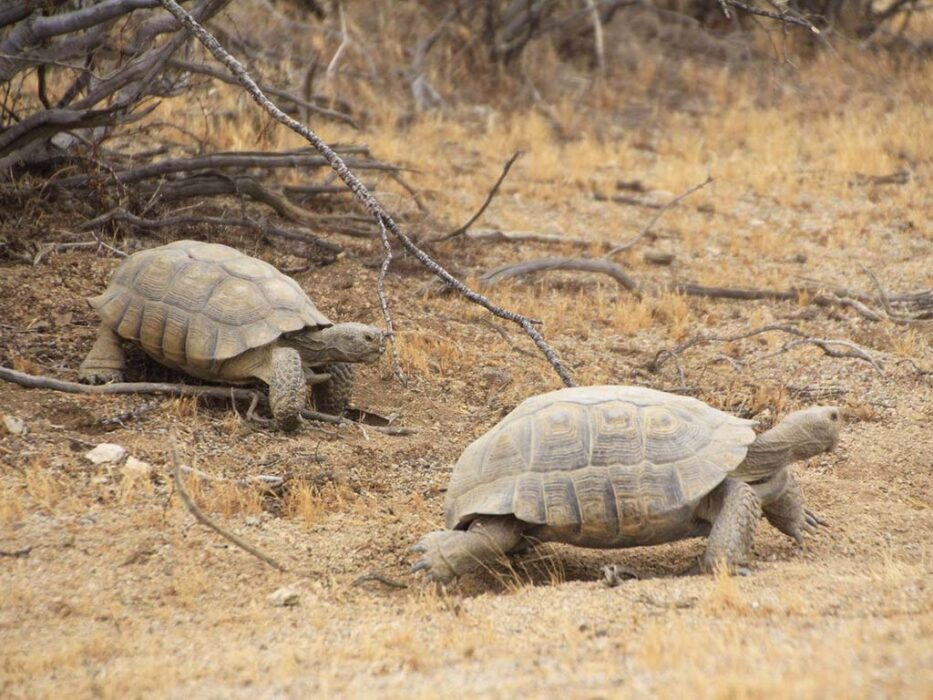
Desert tortoise pair on the move. Photo by the BLM.
A significant portion of the shrub species in the region are more commonly found in the cooler Great Basin Desert. Washington County (St. George is the county seat) is the only place the endangered Shivwits milkvetch can be found, and there only on specific soil types. The region is also home to important archaeological sites, with evidence of Archaic, Ancestral, Puebloan, and Southern Paiute land uses.
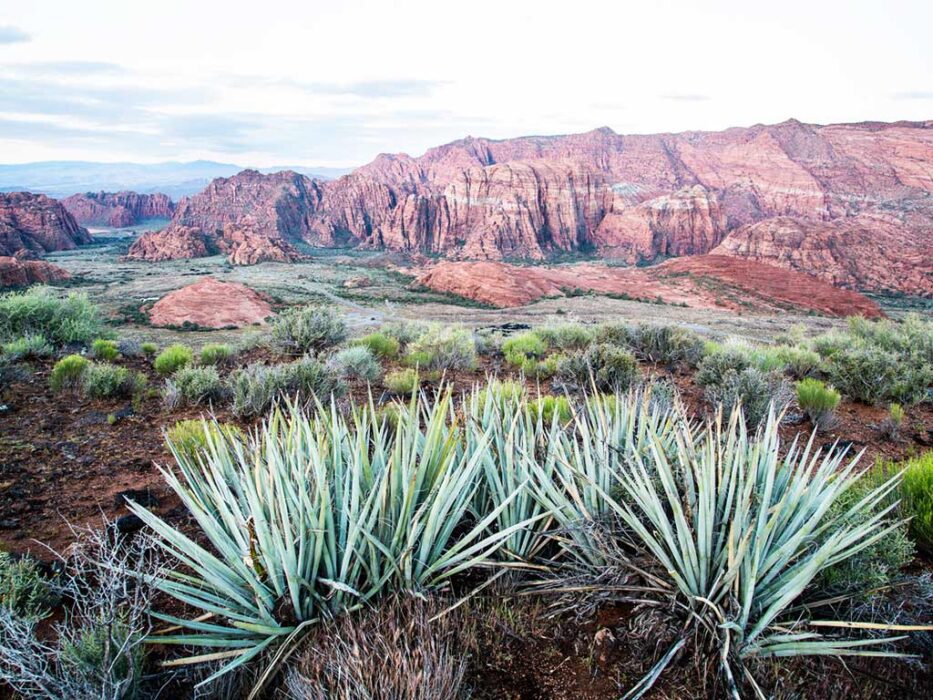
The Red Cliffs Conservation Area is home to a unique array of plants and animals that reflect the three ecoregions. Photo by the BLM.
In 1990, the Mojave desert tortoise was listed as a threatened species under the Endangered Species Act. By then, the region’s expansion was in full swing and local government officials feared the listing would halt residential and commercial development. So county commissioners begrudgingly worked with federal officials to develop and implement the Washington County Habitat Conservation Plan (HCP).
Under the terms of the 1996 HCP, the county agreed to create the Red Cliffs Desert Reserve, preserving 60,000 acres of habitat from development. In exchange, the federal government signed off on the county allowing development on 350,000 acres of non-Federal land outside the Reserve. Congress followed that in 2009 by designating 45,000 acres of public lands within the Desert Reserve as the Red Cliffs National Conservation Area (NCA) to conserve, protect, and enhance the region’s ecological, scenic, wildlife, recreational, cultural, historical, natural, educational, and scientific resources.
For the past quarter century, the 350,000 acres that the HCP released for development have provided a ready supply of developable land, fueling St. George’s expansion. Now, the impacts of all that growth are materializing: traffic congestion, a municipal water shortage, declining tortoise populations. Rather than tackle these issues directly, local officials want to exploit more public lands and shift the ecological costs. The proposed Northern Corridor highway through the heart of the Red Cliffs NCA is a prime example of this strategy.
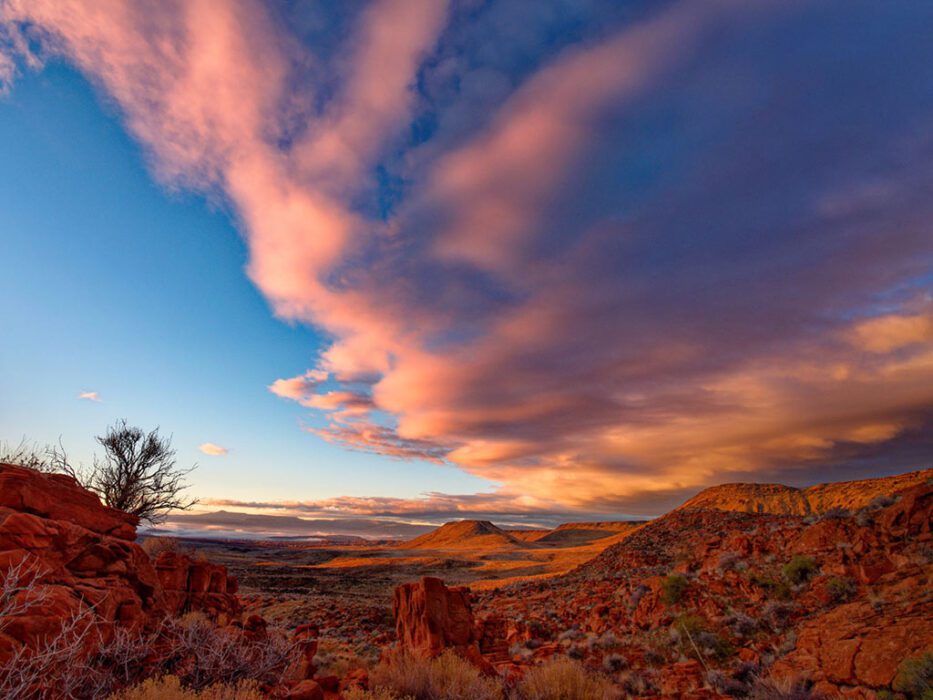
In 2009 Congress designated the Red Cliffs National Conservation Area (NCA) to conserve, protect, and enhance the region. Photo by Steve Horne.
Washington County’s commissioners have demanded that the Bureau of Land Management grant a right of way for a new highway through the Red Cliffs NCA. The county claims the Norther Corridor is needed to relieve traffic congestion on a section of I-15 on the east side of St. George. The highway would pave over 150 acres of critical habitat for the Mojave desert tortoise and fragment thousands of acres of habitat in the highest-density tortoise zone in the Desert Reserve. Other tortoise impacts associated with the proposed highway include direct mortality during construction activities, increased predation, and increased human disturbance from increased access to formerly remote areas.
To make matters worse, it has long been clear that building new highways doesn’t relieve traffic congestion—more roads just leads to more driving, which offsets the initial (temporary) reduction in congestion. Washington County’s commissioners have gotten approval from the Bureau of Land Management—a federal agency that is supposed to act in the interest of the public rather than at the behest of local elected officials—to spoil the Red Cliffs for a project that won’t fix the problem.
St. George is also shirking responsibility for its impending water shortage. Other desert metropolitan areas, such as Phoenix and Las Vegas, have instituted mandatory conservation measures, but St. George and Washington County have not. As a result, the St. George metro uses twice as much water per capita as the national average, and says it needs more.
Rather than implementing conservation measures to reduce demand for water, St. George hopes to increase supply. To do so, it has proposed the Lake Powell Pipeline, a project to annually divert 90,000 acre-feet (28 billion gallons) of water from the Colorado River just upstream of the Grand Canyon and pump it uphill for 140 miles to southwest Utah. Just as the Northern Corridor would cut through the heart of the Red Cliffs NCA, the Lake Powell Pipeline would bisect the remote desert in northern Arizona and southern Utah, including the Paria Canyon-Vermillion Cliffs Wilderness Area. Diverting so much water each year would also diminish flows through the Grand Canyon and further downstream.
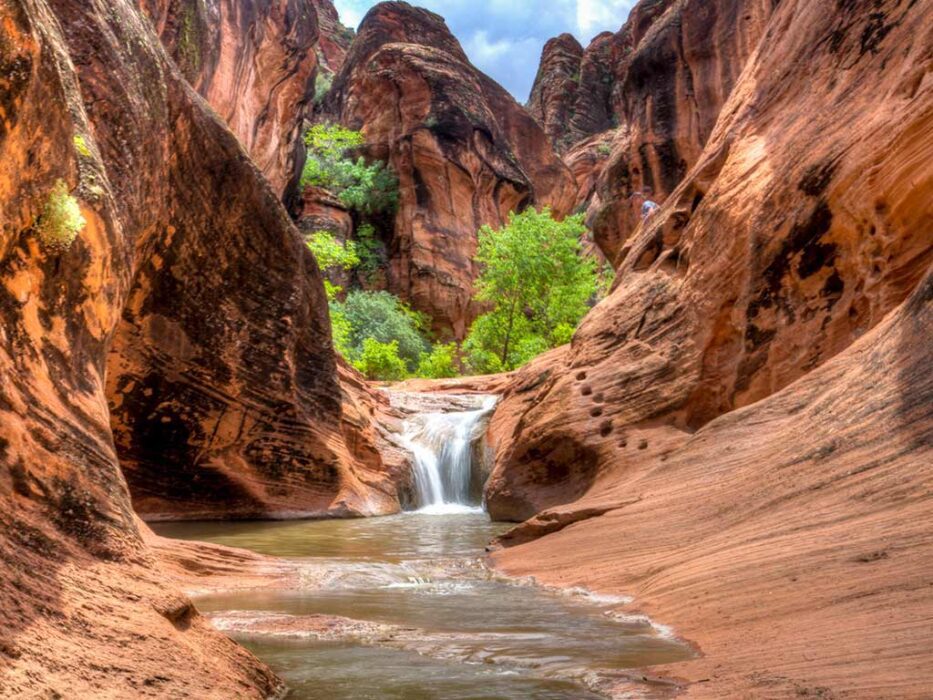
The Red Cliffs National Conservation Area offers a rich biodiversity that supports plants, wildlife, and water conservation. Photo by the BLM.
Decades of expansion have also drastically cut into the supply of raw land. To augment the supply, developers have submitted proposals to the Bureau of Land Management to acquire public land via land exchange and the Recreation and Public Purposes Act. If the proponents are successful, these conveyances will expand the region’s footprint further into the fragile desert and seek even more water from the Colorado River’s shrinking supply.
What’s happening in St. George is alarming for our nation as a whole. Western public lands have been set aside to ensure protection for future generations and so that we have wild places and habitat for wildlife as population growth soars. We should not be looking to public lands to carry the burden of poorly planned growth. Instead, local leaders should consider alternatives that will truly meet the challenges of local communities.
In the coming months we’ll be sharing more and plan to host a webinar to discuss some of these concerns in more detail. Until then, we at Guardians will continue to defend against these threats. We are continuing to challenge the legal parameters of the proposed road through a congressionally protect conservation area and will push to hold the BLM accountable to their own management responsibilities.
